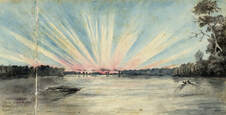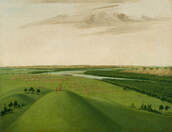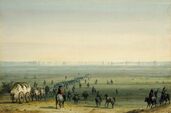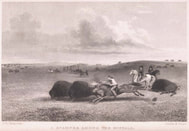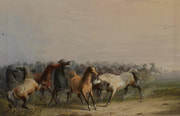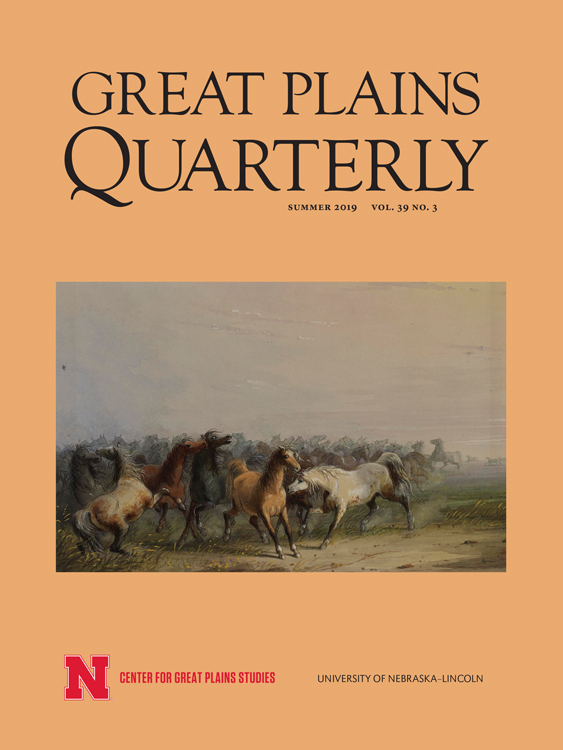Our Eyes Ached
|
|
Titian R. Peale, Sunset on the Missouri 370 Miles above Its Mouth (July 28, 1819). Watercolor. Courtesy of the American Philosophical Society, Philadelphia, PA
George Catlin, Fort Union, Mouth of the Yellowstone River, 2000 Miles above St. Louis (1832). Oil on canvas. Courtesy of the Smithsonian American Art Museum, Washington, DC
Alfred Jacob Miller, Prairie Scene: Mirage (1858-1860). Watercolor on paper. Courtesy of the Walters Art Museum, Baltimore, Md
J. G. Chapman, A Scamper among the Buffalo (ca. 1844). Engraving. Courtesy of the Beinecke Rare Book and Manuscript Library, Yale University, New Haven, Ct
Alfred Jacob Miller, Wild Horses (1858-1860). Watercolor on paper. Courtesy of the Walters Art Museum, Baltimore, Md
|
